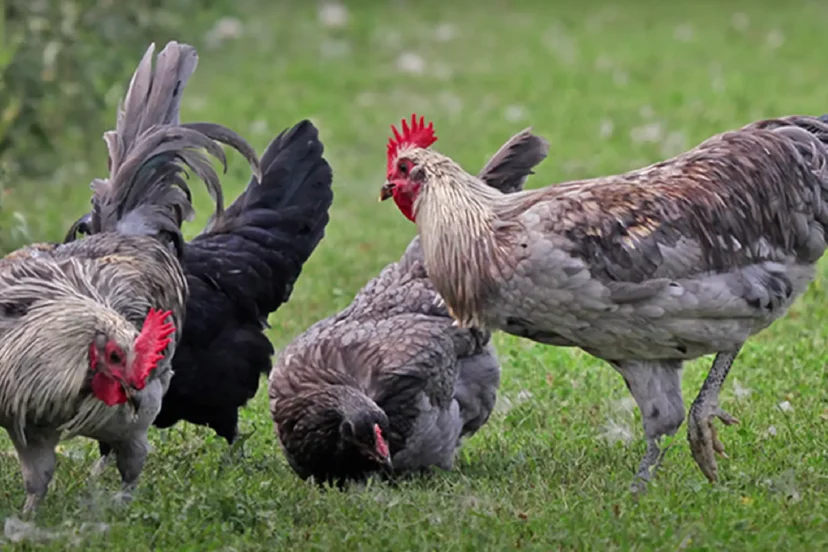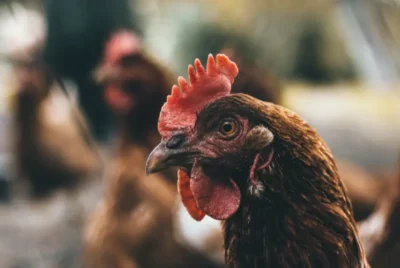Complete Care Guide for the Unique Isbar Chicken Breed
Meet the Isbar chicken, an exceptional breed straight from Sweden, renowned for not only its novel green egg production but also its captivating colors and sociable demeanor. Our definitive guide walks you through the ins and outs of Isbar care, making it an irreplaceable resource for raising these remarkable birds yourself.
Isbar Chicken: Origin and Development
The Isbar chicken, a Swedish marvel, was developed by the notable geneticist Martin Silverudd. Born out of Silverudd’s vision, this breed was originally known as ‘Swedish Grönegggsvärpare,’ literally translating to ‘Green egg layer’ in Swedish.
The breed’s significance extends beyond its unique egg-laying trait, as it played a pivotal role at Alchemist Farm, a hatchery renowned for its commitment to breed preservation and genetic enhancement.
In honor of Silverudd’s extraordinary work, the Swedish Cultural Hen Society officially renamed the breed ‘Silverudd’s Blue’. This renaming not only honored Silverudd’s contribution but also preserved the distinction of the Silverudd Blue lines, distinguishing them from non-Silverudd Blue counterparts.
Today, the Isbar stands as a testament to the ingenuity of Silverudd’s breeding vision, with its green egg-laying ability setting it apart in the poultry world.
The Role of Martin Silverudd
Martin Silverudd is renowned for his revolutionary contributions to poultry breeding. His primary focus was on developing auto-sexing breeds that produced a high yield of uniquely colored eggs.
The Isbar breed was a realization of Silverudd’s goal to establish new auto-sexing chickens that consistently laid a plethora of green eggs, making the Isbar a living testament to his ground-breaking work.
Breeds Involved in Isbar Development
The Isbar breed was a result of meticulously planned crossbreeding. Silverudd began with a small-framed New Hampshire rooster and a high egg-producing Rhode Island Red hen. Their offspring were then bred with Cream Legbars, introducing the much-coveted blue egg gene. Other breeds likely involved in the mix included Australorps, an Austrian breed.
The unique green egg color of Isbar chickens is the result of this careful intermingling of genes – a beautiful melding of the blue eggshell gene from the Cream Legbar with the brown egg genes from the Rhode Island Red and New Hampshire breeds.
Isbar Chicken Appearance and Varieties
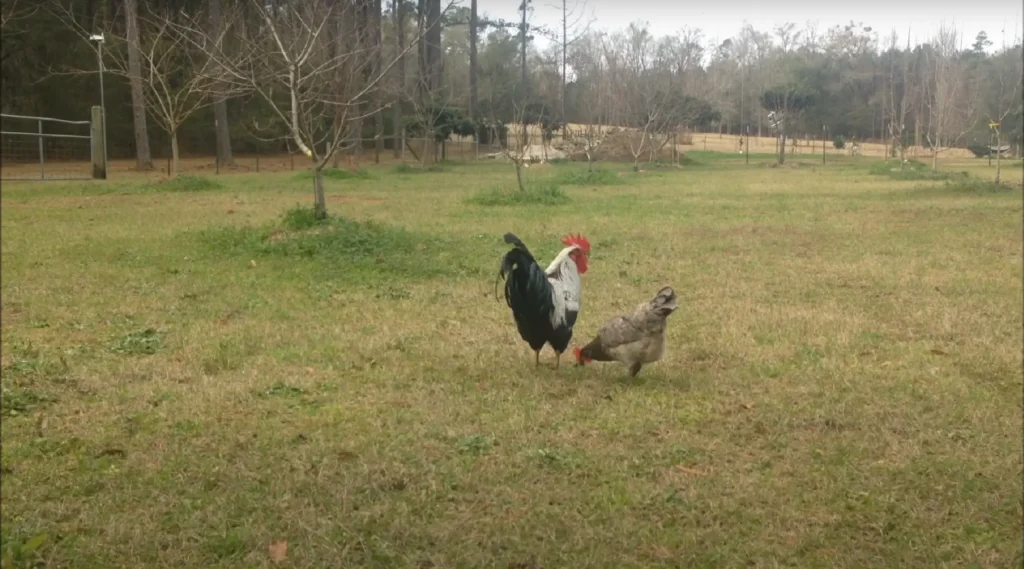
With their unique appearance, Isbar chickens stand out from other chicken breeds, making them a sight to behold. They come in three striking color variations:
- Black: showcasing raven-colored plumage
- Blue (also known as Silverudd Blue): displaying a range of blue shades, often seen in blue Isbar hens
- Splash: a delightful mix of a white base with blue dabs distributed across their body.
Their distinctive appearance extends beyond their plumage. Isbar chickens, a smaller framed bird, have notably dark eyes, some even showcasing a distinctive golden ring.
Isbar roosters typically weigh between 7-8 pounds, while the hens are slightly lighter, weighing in at 5-6 pounds. These vibrant colors and unique features make the Isbar a breed that’s as eye-catching as it is special.
Color Variations
The different color varieties of the Isbar chicken are a result of careful and calculated breeding. The three primary colors are:
- Black: Black Isbars start with black down and white spots, eventually maturing into solid black plumage.
- Blue: Blue Isbars have a slate blue coloration.
- Splash: Splash Isbars have a white base with random splashes of blue or black.
Black Isbars are the rarest, while Splash Isbars are the most commonly hatched.
The Blue Isbars, meanwhile, exhibit a range of blue shades, sometimes even showing lacing around the neck. However, one of the most fascinating aspects of breeding Isbars is that it does not produce true to color offspring, leading to a variety of chick colors, regardless of the parents’ colors.
Unique Features
Beyond its vibrant colors, the Isbar chicken possesses unique physical features that distinguish it from other breeds. For one, Isbars have single combs and red wattles, both of which contribute to their distinctive appearance. The combs, wattles, and earlobes of an Isbar are a striking light red color, which makes them stand out in a flock.
For show breeders, it’s essential to select Isbar chickens with bright red wattles and combs as well as the correct leg color and form to meet exhibition standards.
Isbar Chicken Egg Production

Not only are Isbars attractive birds, they are also consistent egg layers. These chickens provide a steady supply of about four to six eggs per week, although this can vary due to individual hen differences and seasonal changes. Isbar hens begin laying at 5 to 6 months of age and can continue to produce eggs until around 6 to 7 years old.
Despite their smaller frame, Isbars lay generously sized eggs, with individual eggs often weighing between 50 to 65 grams.
This green egg production is a hallmark feature of the breed, with variations in egg color from blue eggs to pale blue to mint green, making them excellent green egg layers. In addition to green eggs, some individuals within the breed lay blue eggs, further diversifying the egg color spectrum.
One fascinating fact is that this breed lays green eggs, which adds to their uniqueness, and they stand out among other green egg layers.
Green Egg Production
The result of pairing a homozygous blue shell gene with a brown pigment overlay gene is the green egg color in Isbar chickens. Selective breeding is crucial for ensuring that Isbar chickens continue to produce green eggs consistently. It’s essential to avoid breeding hens that lay brown eggs, which would not preserve the desired green egg-laying trait.
The production of green eggs with occasional purple speckling is not only a unique trait but also a hallmark of the Isbar chicken breed, making it a key distinguishing feature for breeders and enthusiasts.
Factors Affecting Egg Shade
While Isbars are known for their green eggs, noting the variability in egg shades is interesting. The lack of breed standardization in Isbars contributes to this variability, with egg shades ranging from a light minty green to a darker, mossy green.
Selective breeding, particularly with a focus on egg color, can influence the consistency of the egg shade, from pale minty to darker mossy green hues, resulting in colorful eggs. As these colorful eggs hatch, the process of hatch eggs can also be an exciting experience for breeders. In fact, some selectively bred birds are known to lay colorful eggs, adding to the appeal of such breeding practices.
Temperament and Compatibility with Other Chickens
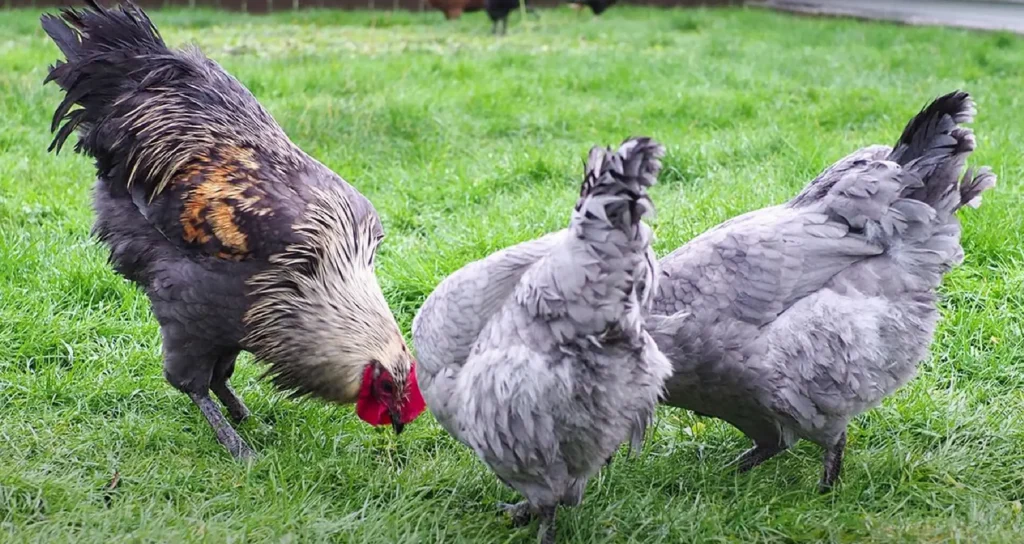
Beyond their pretty feathers and green eggs, Isbars also boast a delightful personality. These chickens are:
- Active nature
- Friendly demeanor
- Adaptive behavior
- Low-maintenance nature
Making them well-suited to backyard flocks. They are naturally curious and one of the sweetest breeds. Their non-aggressive behavior contributes to a peaceful coop environment.
Isbar Chicken Personality
Their friendly and docile temperament earns Isbar chickens a pleasant presence in any yard or farm. While young Isbars may display skittish behavior, they become increasingly friendly and calm with age, especially with positive reinforcement through treats and interactions.
Sociable by nature, they often seek the company of humans or fellow flock members, following them around appreciatively. Breeding Isbars with a friendly and docile nature is important for both exhibition purposes and to maintain their desirability for backyard flocks.
Compatibility in a Flock
Isbars are social creatures that establish tight-knit flocks, demonstrating a preference for the company of other Isbars. They maintain peace with other general chicken breeds, specifically those known for their docility. Their friendly disposition makes them less prone to aggression, which supports a harmonious environment within the flock.
Isbars shows an ability to range freely, showcasing predator awareness and suitability for living in varied environments. You should gradually introduce new chickens to an Isbar flock as the protective Isbar roosters might initially perceive them as threats.
Health and Longevity of Isbar Chickens
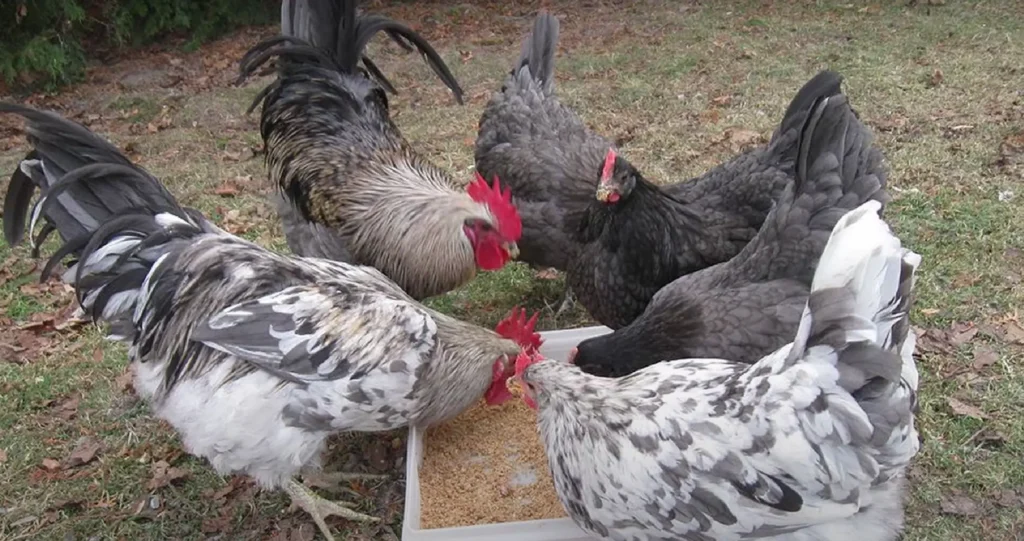
Although Isbar chickens are generally healthy birds with few health issues, they are not immune to common health problems, much like any other breed. They may suffer from immunosuppression, making them more susceptible to diseases like Salmonellosis and Chronic Respiratory Disease (CRD). Despite being good foragers, Isbars are prone to obesity if overfed or if their diet consists of high treats and low nutrition.
Regular health monitoring and behavioral changes, decreased egg production, and unusual droppings are some of the indicators to detect health issues early.
Common Health Issues
Isbars can fall victim to various diseases, making early testing and prompt treatment essential for recovery. Responsible breeders, like those at Alchemist Farm, strive to produce Isbar chickens with strong immunity to avoid health issues. Some common diseases that Isbars may be susceptible to include:
- Respiratory diseases
- Marek’s disease
- Coccidiosis
- Egg peritonitis
Maintaining genetic diversity and avoiding inbreeding is critical to prevent chronic conditions, such as respiratory diseases, that can be exacerbated by genetic weaknesses.
Isbars, like many other breeds, can suffer from vent gleet—a fungal infection marked by discharge from the vent, feather loss, and a decline in egg production.
Longevity Factors
With proper care, Isbars typically boast an average lifespan ranging from 6 to 10 years. Longevity in Isbars is promoted through:
- Access to clean water
- Sanitized drinking areas
- Quality housing
- Careful oversight of their care
Heritage breeds, like the Isbar heritage breed, have a significant genetic advantage, contributing to their potentially longer lifespan compared to commercial hybrids. The lifespan of Isbars can be impacted by their climate adaptability, with certain climates being more compatible with the breed’s well-being.
Implementing vaccinations and adhering to strict biosecurity measures can effectively prevent diseases, thereby extending the life expectancy of Isbars.
Tips for Raising Isbar Chickens

Raising Isbar chickens requires care and attention. Here are some important considerations:
- Provide them with adequate shelter and maintain cleanliness to prevent diseases.
- Their diet should include feed with at least 16% protein, supplemented with fruits, vegetables, and fresh water.
- Isbars also require time and space to scavenge for their own food, helping to reduce feed costs.
Regular health monitoring, combined with purchasing Isbar chickens from reputable breeders, can considerably reduce health issues in the flock. When raising Isbar chicks, it’s normal for them to appear skittish and flighty, but they typically become more friendly as they mature.
Breeding Strategies and Goals for Isbar Chickens
A focused approach is required when breeding Isbar chickens. Preserving and promoting the Isbar chicken, also known as Silverudd Blue, are essential for maintaining genetic diversity within poultry breeds. Breeders are encouraged to establish clear strategies and goals prior to starting an Isbar chicken breeding program, ensuring a focused approach to preserving the breed.
Selecting high-quality breeding stock is crucial for the Isbar chicken breed to promote desirable traits and ensure the continuing health of the breed’s genetics.
Establishing Breeding Objectives
You should consider several key factors when establishing breeding objectives for Isbar chickens. The use of molecular tools, such as SNP genotyping, is significant in monitoring the genetic diversity within Isbar chicken populations, which is a fundamental objective in breeding programs.
Understanding the influence of crossbreeding on temperament is also essential, as breeding two docile Isbar chickens does not guarantee the progeny will also be calm and friendly.
Selecting Quality Breeding Stock
To promote desirable traits and ensure the continuing health of the Isbar chicken breed, selecting high-quality breeding stock is crucial. Genetic diversity within Isbar chicken breeding stock is crucial to prevent inbreeding depression, which can lead to chronic respiratory diseases.
Breeding programs should aim to maximize the number of families, especially in terms of sires, to maintain a diverse genetic pool and avoid genetic bottlenecks. The selection of Isbar chickens for breeding requires growing out each hen and rooster to observe their offspring and ensure that they possess desired traits.
Frequently Asked Questions
How do you pronounce Isbar chicken?
You pronounce Isbar chicken as “Ice Bar.” It’s a rare breed developed in the 1950s in Sweden.
What time of year do chickens hatch eggs?
Chickens can hatch eggs all year round, but the most popular time to breed them is in the spring, from February to May, when the flock is strongest and healthiest. This is the best time for healthy egg production, and also when mother hens are more likely to brood.
What makes Isbar chickens unique?
Isbar chickens are unique because they lay naturally green-tinted eggs, and they come in three color variations: Black, Blue, and Splash. So, if you’re looking for something different in your egg basket, Isbar chickens are a great choice!
Raise Now Your Isbar Chickens
From their unique green egg-laying ability to their vibrant plumage and friendly temperament, Isbar chickens truly stand out among poultry breeds. A
lthough they may be challenging to find, the joy of raising these birds and the beauty they add to any backyard flock make the search worthwhile. Breeding Isbars requires a focused strategy and clear objectives, but the result—healthy, happy chickens that lay beautiful green eggs—is a reward in itself.
So, whether you’re a backyard chicken enthusiast or a breeder looking to preserve a unique breed, consider the Isbar chicken. They’re not just a breed—they’re a green-egg laying wonder!

